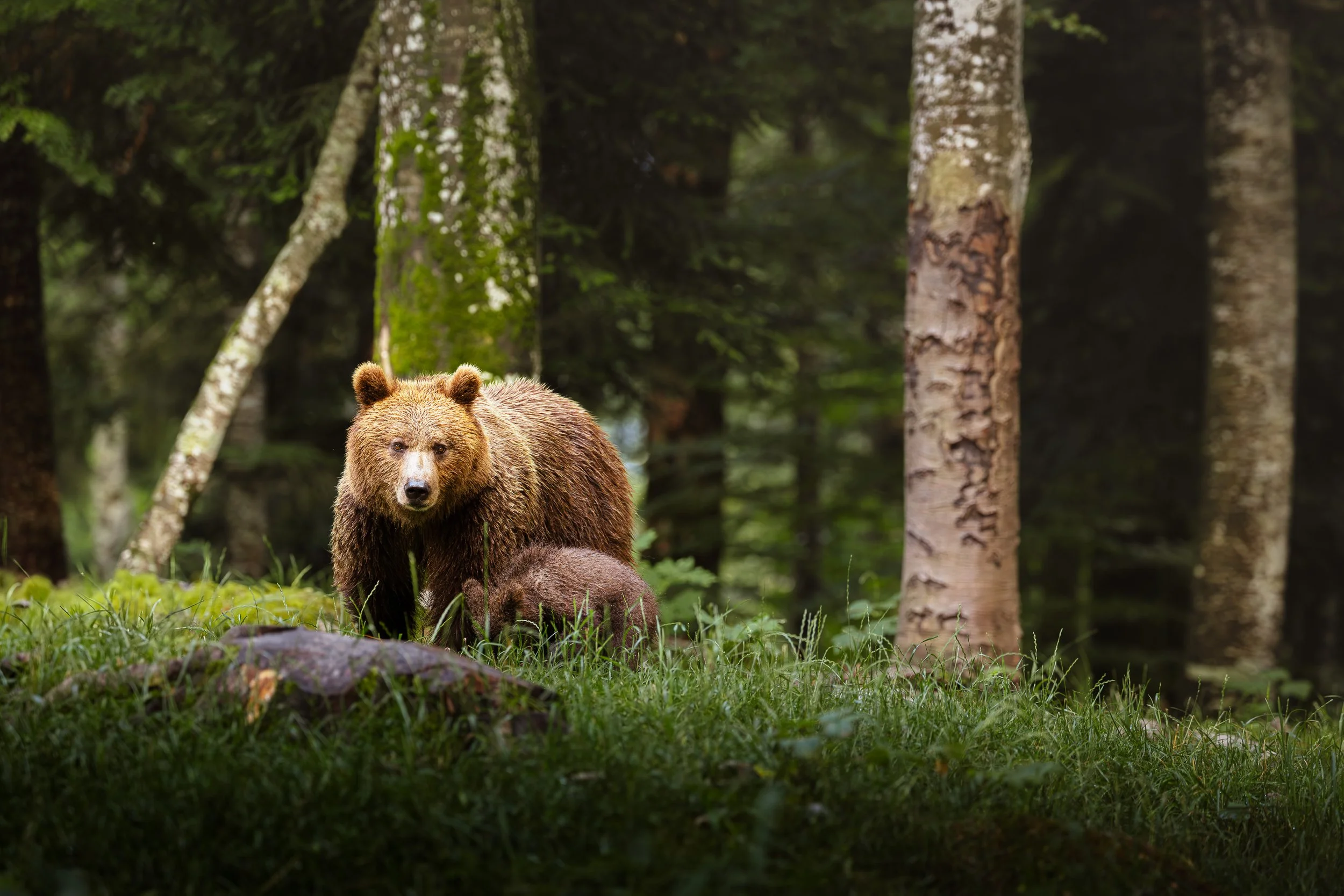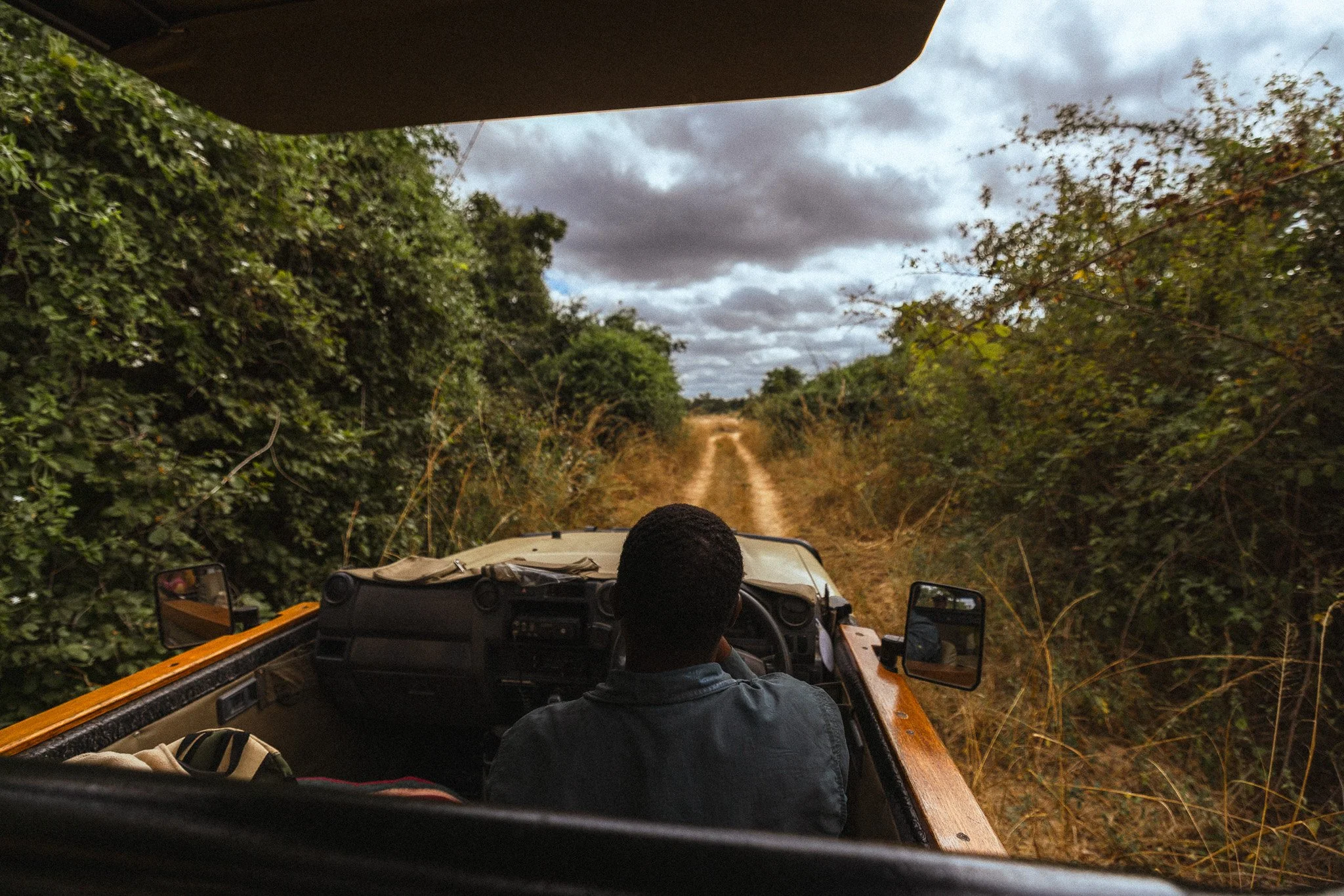Wildlife Photography Ethics: What I Won’t Do for a Shot
There’s this moment I can’t get out of my head.
It was in the South Luangwa. We’d tracked a coalition of male lions through the scrub, following their fresh prints in the sand after a night of roaring that echoed across camp. After three hours, we finally found them—resting in a patch of shade, bellies full, eyes half-closed, flies dancing around their noses.
I was setting up a shot, using a long lens on the beanbag and keeping a low profile. When, out of nowhere, a vehicle flew in from the opposite side. Drove straight off the track. Pulled up within ten meters of the lions.
The cats lifted their heads, visibly alert. One of them stood up. The moment was gone.
And just like that, someone else’s need for a better shot ruined the experience for everyone—including the lions.
That’s the moment I realised: what I won’t do for a shot is more important than what I will.
A male lion
We’re Not There to Interact. We’re There to Witness.
If an animal is reacting to me, I’ve already failed.
That’s the rule I live by. Whether I’m in a hide, a vehicle, or on foot, my top priority is to minimise the disturbance to wildlife. The whole point of this craft is to witness behaviour that’s natural, raw, and undisturbed. The moment we become part of the story, we’ve changed it.
I’ve seen leopards abandon kills because of careless vehicles. I’ve seen elephants become aggressive when someone gets too close to them. I’ve seen photographers clapping, whistling, and throwing things to “wake up” a lion.
And look, I get it. Sometimes, the temptation is strong. The light is perfect. The animal is facing the wrong way. You think, what if I tap the car door? But those little actions stack up. They teach animals to associate humans with stress, or worse, with food.
This isn’t a zoo. This is their home. And our job as photographers is to respect that.
The “Perfect Shot” Isn’t Worth a Broken Boundary
There’s this illusion in wildlife photography: that we need to get closer, go wider, shoot tighter, make it better than the next person’s Instagram post.
But here’s the uncomfortable truth: some of the most viral wildlife photos you’ve seen were taken unethically.
I’ve seen images of predators at impossible angles and distances. And I know what it took to get them: baiting, off-roading, drones flown illegally, or simply stressing animals until they move where you want them.
I won’t do it.
Not just because it’s wrong. But because it breaks trust with nature, with local communities, and with the next generation of photographers watching what we do.
I’d rather come home with a slightly soft image, or a leopard facing the wrong way, than one that came at the cost of the animal’s well-being.
A leopard stalking a herd of springbok
I Won’t Use Bait, Ever
This one’s non-negotiable.
In some countries, baiting is legal—or at least tolerated. People will throw out scraps, dead chickens, even roadkill to lure in predators. It makes for dramatic photos, sure. But it also teaches animals to associate humans or vehicles with food. That’s how you get habituated hyenas, or worse—big cats that lose their natural hunting behaviour.
I once saw a jackal waiting near a camp kitchen, completely fearless. It turns out that someone had been feeding it leftovers. A few months later, it bit a guest. It was shot by rangers the next day.
That’s the chain reaction baiting starts.
So no: I won’t bait. I won’t support guides or operators who do. And if I see it happening, I say something, even if it’s awkward.
On a recent trip to Slovenia, I discovered that the bears being photographed were indeed baited, but not in a way that might raise ethical concerns. In Slovenia, baiting for hunting is strictly forbidden. However, the use of small, controlled amounts of bait in designated hides is a long-standing, regulated practice aimed at responsible bear watching. The goal is to offer opportunities for safe observation while enabling local communities to benefit from ecotourism. More importantly, it teaches bears to associate food with specific, supervised areas rather than with human settlements, thereby reducing the risk of conflict and supporting broader conservation goals.
I Won’t Off-Road Where It’s Not Allowed
Off-roading is a big grey area.
In some parks, such as parts of Botswana’s Khwai or Zambia’s South Luangwa, off-roading is permitted by guides under specific conditions, including tracking predators. In others, like Etosha or Kruger, it’s strictly forbidden. But you’d be surprised how many self-drivers ignore that.
Driving off-road damages fragile ecosystems. It crushes plants, disrupts burrows, and leaves tracks that last months in dry environments.
More importantly, it stresses the animals. Ever seen a cheetah get up and move because your car got too close? I have. And the regret that follows… that sits with you.
So even if it means a less-than-perfect angle, I stay on the track. I work with what I’m given. I get creative instead of aggressive.
I Won’t Block Someone Else’s View
This one’s less about the animals and more about us.
Safari isn’t a race. Or at least it shouldn’t be.
But I’ve lost count of how many times someone pulls in at a sighting and parks right in front of everyone else. Or worse—sticks a lens out, fires away, and then leaves without even acknowledging the group.
Look, I make a living from photography. But that doesn’t give me the right to ruin someone else’s experience.
The bush is shared space. Tourists, birders, photographers, filmmakers—we’re all guests. If I’m leading a workshop and I see another vehicle waiting, I move after a few minutes. If I’m on a great sighting, I make space. If someone asks for a window, I offer it.
The best photo? It’s the one you earn after gaining respect, not stealing it.
Mother bear and cub in Slovenia
I Won’t Use a Drone (Unless I Have Full Permission)
I love drones. Used responsibly, they can offer incredible storytelling perspectives.
But they’re also easy to misuse. And in almost all national parks across Africa, they’re strictly banned. That’s not just a random rule. Drones disturb nesting birds, frighten game, and can trigger real panic if flown too low or too close.
I’ve seen elephants stampede at the buzz of a drone. I’ve seen raptors abandon trees. It’s not worth it.
Unless I have explicit written permission, I leave the drone packed. I focus on the ground. And I remind myself: just because the tech exists doesn’t mean it should be used everywhere.
Photography Shouldn’t Come at a Cost to Conservation
This is the hill I’ll die on.
Too many photographers talk about “loving wildlife” but act like they own it. They justify unethical shots by saying they’re “raising awareness” or “telling a story.”
But awareness without responsibility is just exploitation.
If we care about wildlife, our actions need to reflect that—not just our captions. That means supporting ethical operators, respecting park rules, tipping guides who advocate for animal welfare, and refusing to share or praise images that were clearly taken at the expense of the subject.
The wild isn’t our playground. It’s not a backdrop. It’s a living, breathing ecosystem that deserves our humility.
Final Thoughts: Ethics Are the Foundation of Your Legacy
I’m not perfect. None of us are.
I’ve made mistakes in the past, gotten too close. Stayed too long. Pushed the edge of what felt “okay.” But every year, I try to do better. I listen more. I shoot slower. I remind myself: what matters most isn’t the shot—it’s the story I’m part of.
So if you’re starting in wildlife photography, or even years into your journey like I am, here’s what I’d say:
Ask yourself these questions at every sighting:
Is the animal reacting to me?
Am I causing stress or a behaviour change?
Am I sharing this space respectfully?
Would I be proud to explain how I got this shot?
Because, at the end of the day, your photos might live forever, but so do your choices.
👉 Want to see how I approach safari photography ethically in the field?
Check out my YouTube series filmed during safaris in Botswana and Zambia. I discuss gear, camera settings, and, most importantly, how to work with wildlife, not against it.
📩 You can also join my newsletter for more field guides and upcoming ethical photography workshops across Africa and Europe.







